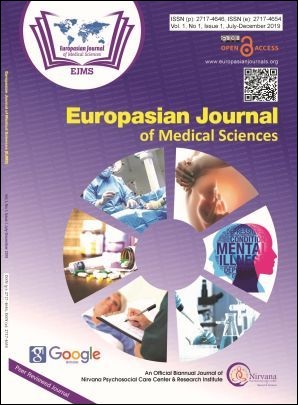Effectiveness of Hyperbaric Ropivacaine over Hyperbaric Bupivacaine in Spinal Anaesthesia
Keywords:
Hyperbaric Ropivacaine, Hyperbaric Bupivacaine, Motor and Sensory Block, Spinal Anesthesia, ASAAbstract
Introduction: Spinal anesthesia is widely recognized as an alternative to general anesthesia for the surgery in lower extremities, perineum or lower body wall. The aim of the study was to compare the effectiveness and safety of hyperbaric Bupivacaine over hyperbaric Ropivacaine .
Materials and Methods: We enrolled 60 patients of either sex, ASA grade I &II who were randomly allocated in two groups. Group-B received 3 ml of 0.5% hyperbaric Bupivacaine with glucose 8% and Group-R received 3ml of 0.5% hyperbaric Ropivacaine glucose 8.33%. The various parameters of the subarachnoid block, hemodynamic variables, recovery from sensory and motor blockade and side effects were studied.
Result: The time to onset of maximum sensory block level was faster in Bupivacaine (9.10±3.90min) than in Ropivacaine (10.87±5.37min) and statistically not significant. The time to 5 segments regression was faster in Ropivacaine (116.00±29.72min) than Bupivacaine (143.50±18.76min) and the time to S2 level regression of sensory block was faster in Ropivacaine (154.00±27.84min) than Bupivacaine (186.00±18.73min). The time to onset of the maximum motor was faster with Bupivacaine (8.70±3.19min) as compared to Ropivacaine (13.10±4.40min) The time to regression of motor block by 1 grade was faster with Ropivacaine (97.00±26.64min) than Bupivacaine (146.50±23.53min) and the time to complete regression of motor block was faster with Ropivacaine (149.00±30.75min) than Bupivacaine (183.50±19.96min).
Conclusion: The hyperbaric Ropivacaine (3ml, 0.5%) provides a reliable subarachnoid block of shorter duration than hyperbaric Bupivacaine (3ml, 0.5%) with stable hemodynamic parameters.
Downloads
Downloads
Published
How to Cite
Issue
Section
License
The author(s) retain the ownership of the copyrights for their work published in EJMS without any restrictions. Upon submission, the author(s) grants EJMS a license to publish, including to display, store, copy, and reuse the published content.
License to Publish
By submitting a manuscript to EJMS, the author(s) grant the journal a non-exclusive license to:
- Publish and distribute the content in all formats, media, and platforms (both existing and future), while identifying EJMS as the original publisher.
- Reproduce, display, and store the content in both print and online formats, including institutional and digital repositories.
- Translate, adapt, and summarize the work, including reprints, extracts, and abstracts.
- Develop derivative works based on the original content.
- Include the work in electronic databases and provide links to third-party materials.
Creative Commons Licensing
In addition to EJMS’s publishing rights, authors grant third parties the right to use, share, and distribute their work under the Creative Commons Attribution 4.0 (CC BY 4.0) International License. This allows unrestricted use of the content, provided proper attribution is given to the original author(s) and the journal.

